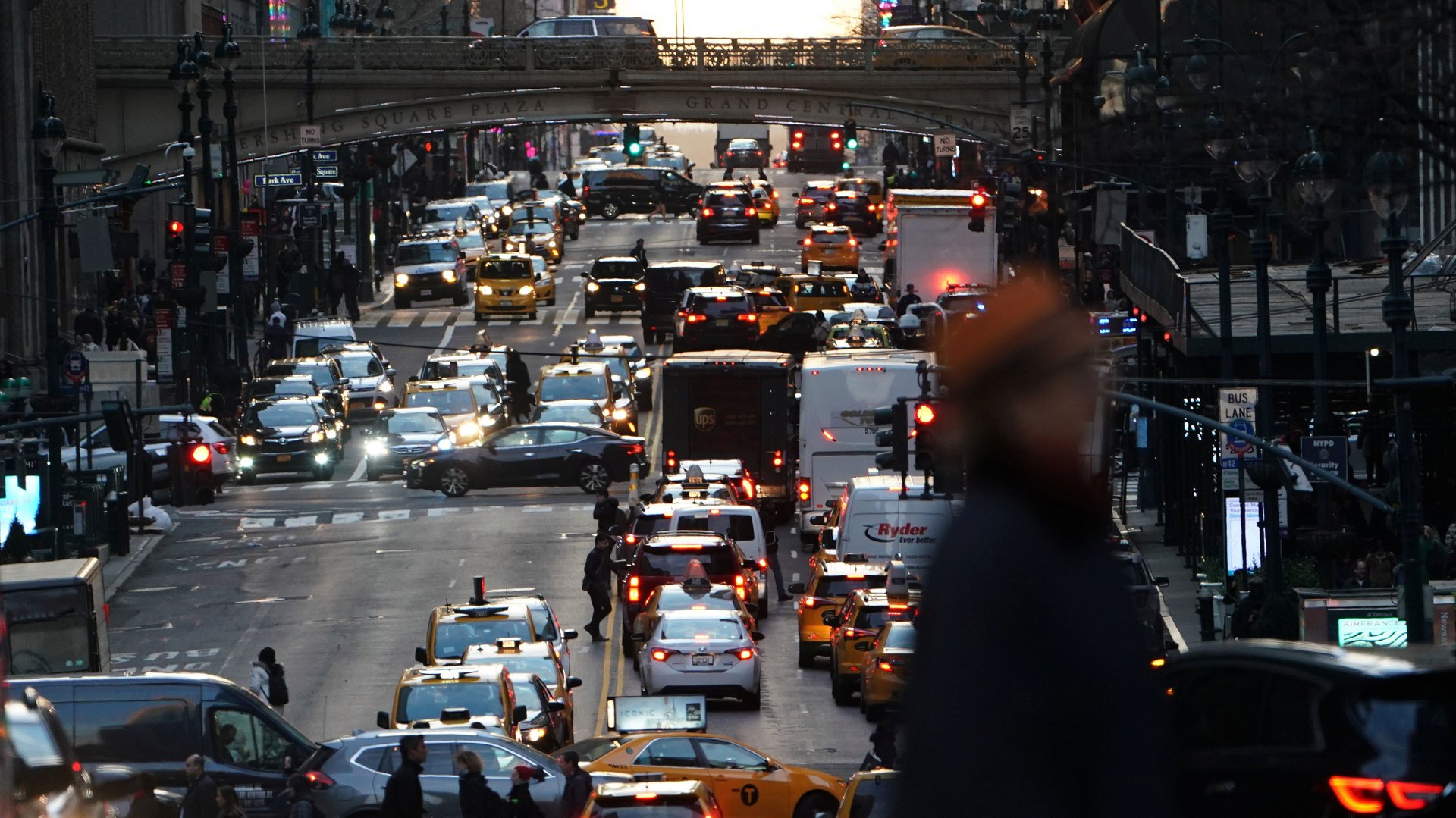New York will be the first US city to charge drivers to enter its busiest areas
New York City will be the first city in the US to charge motorists extra to enter the busiest areas, after the state agreed to a congestion pricing plan as part of its fiscal year 2020 budget hours before the April 1 deadline.


New York City will be the first city in the US to charge motorists extra to enter the busiest areas, after the state agreed to a congestion pricing plan as part of its fiscal year 2020 budget hours before the April 1 deadline.
The plan, billed by state governor Andrew Cuomo’s office as “Central Business District tolling” will charge a yet-to-be-determined fee to vehicles entering Manhattan below 60th Street. The toll is designed to reduce traffic and increase vehicle speeds in the busiest part of Manhattan, and to raise more than $1 billion a year for the city’s decrepit public transit systems. The New York Post reported March 29 that 80% of congestion revenue could go to the city’s subway and buses, and 10% each to the Metro-North and LIRR commuter rails.
The governor’s office said that the congestion pricing would be enforced using electronic tolling devices, passenger vehicles would pay just once per day, and the pricing would be variable. While not specified, tolls will presumably drop at night and on weekends when traffic is lighter.
Congestion pricing has long been popular with transit and policy wonks, but politically unviable in the US. We live in a car-dependent society, and vehicle owners understandably chafe at the idea of having to pay more money to get where they need to go, especially if those fees affect a regular commute. A 2008 push for congestion pricing by former New York City mayor Michael Bloomberg famously died in Albany.
This time last year, a Quinnipiac University poll found that 44% of New York City voters were opposed to using congestion pricing to fund mass transit. But in a January 14 poll (pdf) by Siena Research Institute, opposition to congestion pricing was down to 39% of New York state registered voters and support up to 52%. In fact, support for congestion pricing outweighed opposition across almost every demographic—liberals, moderates, New York City, suburban households, upstate, white, black, Latino, every age group, every religion, and every income level.
Increasing support for a transit tax that disproportionately affects privately owned vehicles is perhaps the clearest sign that the US is ready to change its relationship with cars. The shift has been made easier by the rise of ride-hail services like Uber and Lyft that provide alternative transport options to people in areas without great public transportation. It has also been hastened by growing concern over the environmental harm caused by our reliance on cars, with transportation edging out electricity as the greatest source of carbon emissions in the US.
The tolls passed in New York’s 2020 budget won’t be implemented until Dec. 31, 2020, at the soonest. For the city’s taxis, ride-hailing services, and other for-hire vehicles, though, a version of congestion pricing already took effect. Beginning Feb. 2, 2019, a “congestion surcharge” enacted in April 2018 kicked in for trips in for-hire vehicles that at any point touched Manhattan south of 96th Street.
The surcharge favors Uber and other companies that offer shared rides, like Lyft and Via, because it charges $0.75 per shared trip compared to $2.50 per applicable yellow cab ride and $2.75 for any non-yellow cab private ride (for example, a regular Uber or black car). Uber threw its lobbying weight behind congestion pricing, spending $100,000 to lobby state lawmakers in the first go-round, and allocating another $1 million toward the effort last summer.
The plan was sharply criticized by the taxi industry as a devastating price increase that would further disadvantage drivers already struggling to keep pace with changes wrought by Uber. Nine for-hire drivers in New York City have died by suicide since late 2017, with the most recent death reported on March 24. Congestion pricing will also make deliveries into Manhattan more expensive, which will likely trickle down to consumers in the form of price increases.
Uber and Lyft are now pushing for a similar toll in Seattle as an alternative to a specific tax on ride hailing. Talk of congestion pricing has also surfaced in Los Angeles, a city known for its street-choking traffic.
While the US has never before tried congestion pricing, international cities that have adopted the policy know it works. Vehicle speeds rise, and congestion and carbon emissions fall. “If you survive this valley of political death, and people actually see the benefits, and also realize that, in addition to the benefits, it’s actually not as bad as you thought,” Stockholm transportation director Jonas Eliasson told Curbed in March 2018, “then support starts going up again.”